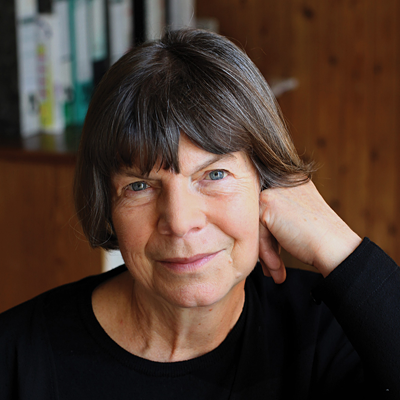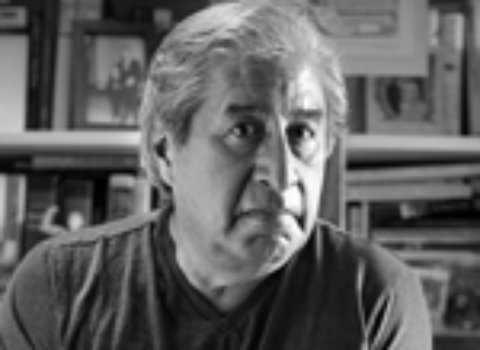The Pure Gold Baby
Dame Margaret Drabble on the essayistic voice in fiction and North London anthropology
Dame Margaret Drabble is an institution — the editor of the fifth and sixth editions of The Oxford Companion to English Literature, and the author of eighteen novels, several works of non-fiction (including studies of Arnold Bennett, Thomas Hardy, Angus Wilson, and William Wordsworth), and a collection of short stories. Her most recent novel, The Pure Gold Baby, out this month from Houghton Mifflin Harcourt and excerpted in the October issue of Harper’s Magazine, follows Jessica Speight, an anthropology student who, after an affair with an older, married professor, gives birth to a daughter, Anna — a beautiful, happy girl with severe learning difficulties, who will remain, in a sense, a child all her life. The Pure Gold Baby is a closely observed group portrait of female friends, a patient insight into the joys and pains of motherhood, and an image of how society has changed and how it has not. I wrote to Dame Drabble with six questions.
1. How did The Pure Gold Baby take shape in your mind?
[1] “Split Hand Split Foot” or ectrodactyly is a rare congenital disorder involving the absence of one or more of the central digits of the hand or foot.
I saw the SHSF[1] children (if that’s what they really were) in Zambia, in the marshes of Lake Bangweulu, I think in 1986, when I was researching a journalistic piece. They haunted me, and all of us who were in the group that saw them. They seemed an image of something important, but I didn’t know what. Independence and difference, self-sufficiency and vulnerability — all mixed up together.
The novel began with that image, of the children, and with the character of Anna, and with the nature of maternal love. Are some of us naturally maternal, others not? I don’t know. I have a good friend who, like me, has three children, and she thinks loving one’s children is the natural default position, but that it doesn’t happen for everyone — she has worked with some very difficult children and adults in her career.
The novel evolved; it hasn’t really got a structure. I just left all (or most) of the essay reflections in, filtered through Jess’s consciousness, wondering if my publishers would tell me to take them out again. I wrote it over a long period. The narrative problem lies with the fact that Anna doesn’t develop or change. She lives in the present. So a conventional plot wasn’t going to work anyway.
2. The novel’s essayistic reflections include passages on the treatment of mental disability and mental illness through history, on changing styles of parenting, on anthropology and exploration, on art and literature. What kind of research did you conduct for the novel, and how did it change the book?
I’ve always been interested in both anthropology and mental disability, encouraged by a college friend who studied archaeology and anthropology at Cambridge. We used to talk a good deal about her studies as well as mine, and on holidays together, with our small children, we would explore sites and talk about prehistory. When I began to think of writing the novel I read widely round the subjects, in the British Library and in the Wellcome Library in London. I also visited one or two institutions that cared for children with learning disabilities. I had a friend (dead now) who was happiest when in the avant-garde NHS Mental Health Unit described in the novel. I also had an au pair girl, a very nice young woman, who had been in Kingsley Hall during the R. D. Laing period, and I met her friend Mary Barnes. Mental-health issues were very much in the air in the 1960s and 1970s, not only among professionals.
The treatment of mental disability in fiction is a subject in itself. Charlotte Brontë thought nothing of referring to a child as a “cretin,” a word we wouldn’t use now, though it was as she used it technically correct. I find the subject of the political correctness in language very interesting, and also very important.
I don’t know why I’ve always been so interested in Livingstone’s mission in Africa, but have twice walked in his footsteps. All these themes came together very, very slowly.
3. In several of your early novels, female protagonists balance the demands of family with ambitious careers, romantic lives, and travel. This novel presents a more sober portrait of women’s lives and, in particular, of parenting. Why do you think you felt compelled to write a story of constraint and consequence, rather than of freedom and adventure?
The answer to this very pertinent reflection and query lies in the fact that I am aging, and now that I am old I am more and more aware of the sadnesses of things that didn’t happen, of things that went wrong. We all live under constraints, and at the end of life we look back at them and wonder how they have shaped our destinies. Several of my close friends have died, or are gravely ill, which is in the way of things, and must be accepted or confronted. I do still travel, and enjoy travel, but for obvious reasons no longer have that sense of boundless hope and expectation. So yes, I think this novel is more sombre, more reflective, more backward looking. But that’s not surprising.
[2] Joshua is the son of one of Jessica’s best friends in the novel, who serves time in prison.
Some of the more sombre tone about children and parenting may come from my acceptance that nature is as powerful as nurture. This is clearly so in the case of Anna, but much more widely true than we used to believe. There are some things that just cannot be helped — like the tragic fate of the little boy who went into the lion’s cage. I still believe in what we might call progressive parenting — allowing children choice and freedom, letting them play in the street, not pushing them toward success or career choice. Many of today’s children are over-protected, and their parents over-anxious and over-ambitious for them. Or so it seems to me. Each generation has its own habits, its own attitudes. We (or the group that I describe here) were sexually tolerant but financially scrupulous. Young Joshua[2] is probably now doing very well in the City.
4. To what extent do you think of yourself as a “North London anthropologist,” as Anna Speight calls herself?
The children appear to us on that journey through Sussex, our own children, not the poor stranger children of Jess’s catalogue, or the children of the lake, but our own North London children, whose stories are not yet finished, whose stories no proleptic twist of plot can pre-empt. The spirit trembles before the leap of prophecy, of guesswork, of staring into futurity.
I do know North London and its manners very well. Two of my children still live there. I think North London has changed in very interesting ways, and perhaps its self-awareness makes it even more interesting. I’ve often been accused of writing “Hampstead novels,” and it’s true that I lived happily in Hampstead for many years, but in fact I haven’t set much of my fiction there, and this novel is more a Highbury/Finsbury Park novel. As was The Needle’s Eye.
I think many novelists are in part anthropologists — writers as diverse as Edith Wharton and Saul Bellow, for example. They study society as well as the individual. I have always been intrigued by social change, by the rise and fall of neighbourhoods, by the evolution of place as well as of people. I walk around observing, making notes, eavesdropping. I love public transport. You learn a great deal about social groupings and behaviour on the buses, tubes and trains. You can be anonymous, yet submerged in what is happening.
5. The narrator of The Pure Gold Baby tells the reader that she hasn’t “the right” to tell the story of her own family, and worries about betraying Jessica and Anna Speight. Have you ever felt that you hadn’t the right to tell a story?
Yes, of course, I worry a great deal about the right to use material from other people’s lives, and when it seems appropriate, I ask permission. There are many stories I shall never tell, because they would invade the lives of others. I think I am more scrupulous about this than some writers, but most writers do worry very much about these issues. The story of Anna raised particular problems, as Anna and those like Anna cannot read, but I think she would not object to having her story told. I’ve known several families with children with learning difficulties, and used them as touchstones for my descriptions of Anna’s education, her capacities, her likely responses in given situations. I don’t think I could have written about her without first-hand knowledge. Her goodness and unselfishness are drawn from life.
I’ve generally found that it’s easier to be truthful in memoir about easy relationships, easier to be truthful in fiction about hard ones. I know I wrote the memoir while my husband was very ill and I was trying to keep calm. The constraints of writing memoir are very obvious, of writing fiction much less so. Fiction is more painful and more difficult, more open-ended, more frightening. My memoir project was very limited and left out a great deal, very deliberately.
6. After writing your memoir, The Pattern in the Carpet, you told interviewers you were finished with writing fiction. Why did you change your mind?
I changed my mind, I think, because when my husband recovered and returned more or less to normal I began to feel underemployed. I tried to find a non-fiction project that would occupy me, but failed to find anything compelling. But writing The Pure Gold Baby was very slow and uncertain; it took me years, much longer than any other book I’ve worked on. Maybe that’s just the slowness of age. I don’t feel a sense of urgency about the next project, as I used to do. I’ve written a good deal, over the years, and don’t feel the need or the pressure to continue. I am more interested in enjoying (while I still can) walking, exploring, looking around me. I no longer feel the need to turn everything I see into words.





